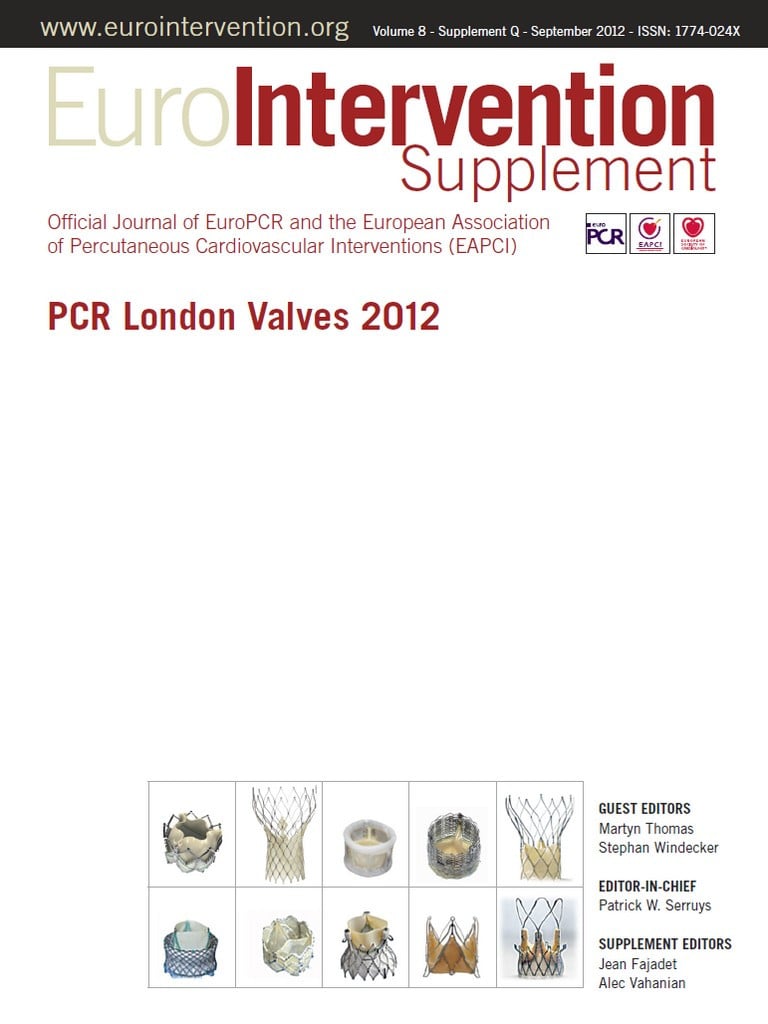![]()
Pot-pourri
Achieving a low pacing rate with CoreValve TAVI: high implantation, new delivery catheter, or both?
Aims: Permanent pacemaker implantation (ppm) post transcatheter aortic valve implantation (TAVI) is a well recognised complication and the greater requirement after CoreValve TAVI compared with surgery (33% vs. 8%). Pre-existing bundle branch block (BBB), larger valve size, post-dilatation and low implantation have been shown to increase independently the risk of ppm requirement. Implantation below the aortic annulus can result in compression of conduction tissue and heart block. A modified delivery catheter (ACCUTRAK) may allow a more controlled release expansion of the prosthesis, preventing low implantation and reducing ppm need. We evaluated the ppm requirement in all our TAVI patients treated before and after the introduction of the Accutrak catheter.
Methods and results: TAVI was performed in 107 patients: transfemoral (84 patients), left subclavian (17 patients) and direct aortic approach (six patients). A high valve deployment strategy of 3-5 mm below the aortic annulus was routinely employed. Thirteen of these had a pre-existing ppm and were excluded from analysis. Forty-six patients had TAVI with a pre-Accutrak delivery catheter and 48 patients underwent TAVI using the Accutrak catheter. Procedural outcomes were analysed with a detailed evaluation of pre-TAVI ppm, pre-procedure ECG, annulus size, predilation balloon size, CoreValve size and post-dilatation in the two different groups. Recognised predictors of ppm requirement post TAVI were similar in both groups and were not significant. A total of 11 patients required a new ppm (11.7%) post TAVI. There were five ppm implantations in the pre-Accutrak group and six patients in the Accutrak group. In the pre-Accutrak group with new ppm implantations, two patients had sinus rhythm (SR) plus LBBB, one atrial fibrillation (AF) with LBBB, one SR with RBBB and one SR. In the Accutrak group, one had SR with RBBB, three patients had SR with first degree heart block and RBBB, three with AF and RBBB, and three with SR and first degree heart block. There was no significant difference in ppm requirement between the TAVI group pre and post-Accutrak (10.9% vs. 12.5%; p=1.0).
Conclusions: In our well characterised cohort, the need for ppm is lower than previous reports (11.7% vs. 33%) and appears to be independent of the Accutrak delivery catheter. We would advocate a high deployment strategy of 3-5 mm below the annulus to reduce the pacing rate. We also observed an apparent reduction in the incidence and severity of the paravalvular leak after high implantation of the device. Further evaluation of the effect of Accutrak catheter on ppm requirement in “middle to low” implanting centres is required.

